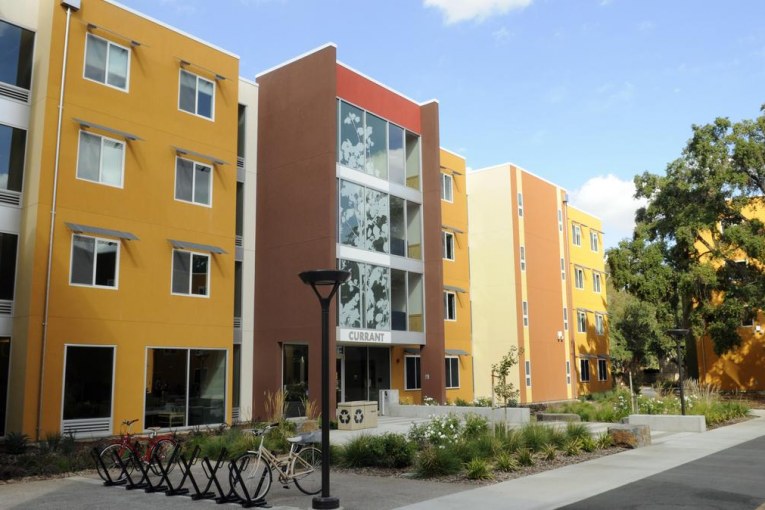

To address growing student homelessness, SB 886 makes it easier and faster for UC, CSU, and community colleges to build on-campus housing for students and faculty
Special to the Vanguard
Sacramento, CA – California’s lack of student housing drives college students into homelessness. SB 886, attempted to address the student and faculty housing shortage. On Monday, it passed the Assembly by a vote of 46-2. It now heads to the Senate for final sign-off before going to the Governor’s desk.
SB 886, the Student and Faculty Housing Act, CEQA-streamlines and accelerates student and faculty housing production across the state and increases the supply of housing so more students and faculty can live on campus. SB 886 gives more students the opportunity to attend California’s public colleges and universities. The legislation exempts from CEQA student and faculty housing projects built on land owned by UC, CSU, or community colleges. CEQA, at times, has been used to stop or delay new student housing from being built.
SB 886 effectively provides UC, CSU, and CCC the same ability to create new student and faculty housing that many cities already have through state housing streamlining laws.
“Students should not be living out of their cars because the housing shortage makes housing scarce and unaffordable,” said Senator Scott Wiener, the bill’s sponsor. “Stable housing is critical in allowing students to get a quality education. We can’t keep punishing the next generation by refusing to build more housing. SB 886 will allow public schools to support students by creating more places to live on campus.”
According to a 2021 report by the Legislative Analyst’s Office, 5% of UC students are currently experiencing homelessness. That number rises to 16% when those living in hotels or transitional housing are included. For CSU students, the rate of homelessness during the academic year is 10%. With over 280,000 students currently enrolled in UCs and 485,000 in CSUs, this means that over 60,000 students at four-year universities in California are currently facing homelessness, with even more facing housing insecurity.
The statistics are even more jarring for our community college system. In a 2019 survey of 40,000 California community college students, 19% of students had been homeless in the last year while 60% had experienced housing insecurity. With 1.8 million Californians currently attending community college, this means over 1 million community college students in this state alone are unable to find an adequate and affordable place to live while pursuing a degree.
The lack of student housing also impacts California’s urgent need to expand access to public higher education for California youth. The UC system, for example, received record amounts of applications in 2021 and has expanded enrollment as demand has increased. The growth in admissions, combined with decades of limited housing development, has left campuses without the necessary shelter for their students or staff. Schools have revoked housing guarantees, and housing waitlists continue to grow. In the fall of 2021 alone, 13 CSU campuses reported having 8,700 students on waitlists for housing, while 8 UC campuses reported 7,500 students – a combined total of over 16,000 students unable to gain access to housing through the university they attend.
Although half of CSUs and all UCs have added housing capacity since 2015, the rate at which these projects are ready to be inhabited has not matched the rise in admissions. One issue facing potential housing projects for students and faculty is the prevalence of CEQA appeals and lawsuits.
CEQA requires state and local agencies to evaluate and disclose the significant environmental impacts of projects they approve and to avoid or mitigate those impacts if possible. CEQA is a critically important law that protects the environment from projects such as refineries that pollute natural resources and jeopardize health, especially for historically marginalized and underserved populations.
However, the CEQA process is subject to appeals and lawsuits that can increase project costs and create delays for reasons completely unrelated to the environment. It’s not unusual for it to take three to four years and millions of dollars to resolve a single lawsuit, while pre-lawsuit appeals regularly take six months to resolve. The delays and excessive costs associated with CEQA can slow down projects, or even prevent proposals from moving forward.
Using CEQA to delay or halt student and faculty housing projects has greatly impacted California campuses, increasing the cost of living in and around campuses, pushing thousands of students and staff into housing insecurity or homelessness. Moreover, increasing on-campus student and faculty housing is inherently environmentally beneficial, as students and faculty can walk to work or school, rather than driving long distances due to the extreme cost of housing.
To qualify for this exemption, projects must be on a UC, CSU, or CCC campus, utilize prevailing wages and a skilled and trained workforce, not utilize land demarcated as farmland, wetlands, or a very high fire hazard severity zone, and not result in the demolition of rent-controlled or affordable housing. Additionally, projects must be consistent with Long Range Development Plans or Master Plans that have been certified on or after January 1, 2018, have a transportation demand management program, and mitigate all construction impacts. Projects cannot result in any net additional emissions of greenhouse gasses.
To qualify for this exemption, each building within a development be LEED Platinum certified, have no more than 33% of the square footage be used for dining, academic or student support spaces, and have a maximum of 2,000 units or 4,000 beds. Projects must be located within half a mile of a major transit stop, half a mile of the campus boundary, or have 15% lower per capita VMT. Lead agencies must hold at least one hearing – with public notice – for a project.
